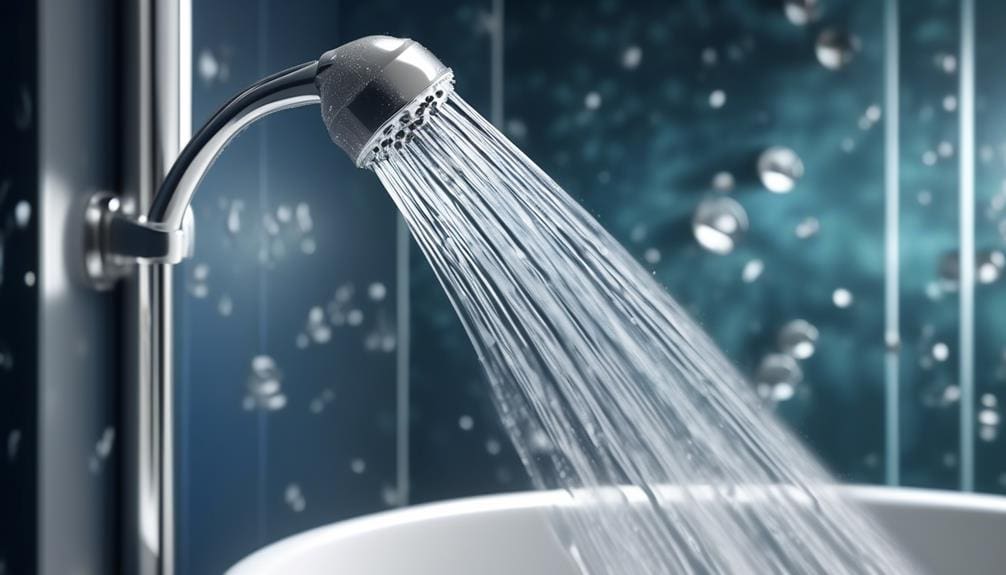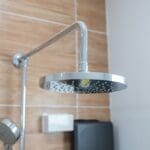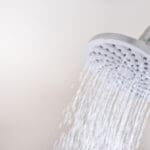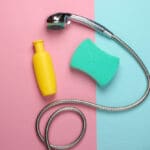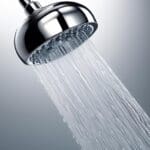Imagine stepping into your shower, ready to start your day, only to find the water pressure from your shower head is frustratingly weak. It’s not the way you want to kick off your morning. The culprit? Clogged rubber nozzles.
But don’t worry, you’re not stuck with this problem. I’m going to walk you through an easy, five-step process to get those nozzles clean and your shower running like new again. From a simple vinegar soak to a gentle scrub, these methods are not only effective but also use household items you likely already have.
So, before you consider replacing your shower head or calling in a professional, give these steps a try. You might be surprised at how straightforward and rewarding the process can be, and I’ll show you exactly how to achieve those results.
Key Takeaways
- Inspect and clean the shower head regularly to prevent blockages and buildup.
- Use a solution to soak the shower head for a few hours.
- Scrub the rubber nozzles gently with a toothbrush or fingertips.
- Rinse the shower head thoroughly and reassemble it for optimal performance.
Inspect and Prepare Shower Head
Begin by examining your shower head for any visible signs of dirt, grime, or mineral buildup. Shower heads have rubber nozzles that can easily accumulate these impurities, especially in areas with hard water. This buildup can lead to low water pressure, affecting your shower experience. Before you start cleaning, ensure the water supply to the shower head is turned off. This precaution prevents any water from interfering with the cleaning process.
If necessary, remove the shower head from the shower arm to access the nozzles better. This step allows for a more thorough cleaning, especially if the mineral deposits are stubborn. Prepare a cleaning solution using vinegar and water or a commercial descaling product. These solutions are effective in dissolving the mineral deposits that accumulate on rubber nozzles. Gather any tools or materials needed for cleaning, such as a toothbrush for scrubbing or a soft cloth for wiping away debris.
Deep cleaning your shower head’s rubber nozzles is crucial for maintaining optimal water flow and preventing blockages. By following these preparatory steps, you’re setting the stage for an effective cleaning process that will restore your shower head’s performance and hygiene.
Remove Debris Manually
After preparing your shower head and gathering the necessary tools, it’s time to focus on manually removing debris from the rubber nozzles. This step is crucial for maintaining a powerful and even water flow. While some heads have rubber nozzles that can be easily flexed or massaged with your fingers to break up deposit buildup, sometimes, more stubborn debris requires a bit more attention.
To effectively remove debris manually:
- Use a toothbrush or toothpick to gently scrub the nozzles in a circular motion, dislodging any clogs or buildup.
- Rinse the nozzles thoroughly with a blast of water to flush out loosened debris.
- Repeat the process if necessary, ensuring that all debris is completely removed.
- Consider removing the head if access to all nozzles is challenging, allowing for a more thorough cleaning.
Regularly performing this manual cleaning can prevent future blockages and maintain optimal performance.
Soak in Vinegar Solution
Soaking your shower head in a vinegar solution is an effective method to dissolve hard water stains and mineral deposits. Start by mixing equal parts of white vinegar and water. You’ll need to fill a plastic bag with this solution. Make sure the plastic bag is large enough to fully submerge the shower head.
Once you’ve got your plastic bag with white vinegar solution ready, secure it around the shower head using a rubber band. This allows you to soak in vinegar solution without removing the shower head, making the process hassle-free.
Let the head soak for a few hours. This duration gives the vinegar ample time to break down the deposits. After soaking, carefully remove the bag and dispose of the vinegar solution.
Rinse the shower head thoroughly with water to ensure all vinegar residue is gone.
Warning: You’ll want to first do a test of the vinegar solution on a small area. Some shower head finishes don’t play well with vinegar. So always test any solution out prior to a full soak or even a scrubbing application.
Scrub the Nozzles
Having let the shower head soak in a vinegar solution, you’ll now want to focus on scrubbing the rubber nozzles to remove any remaining buildup. With the head from the shower arm still removed or secured in the bag for soaking, this step is crucial for ensuring those tiny holes are free from any blockages.
- Grab a toothbrush or use your fingertips, whichever feels more precise and comfortable for you.
- Apply gentle yet firm pressure in circular motions, targeting each nozzle to dislodge the stubborn grime that’s clinging on.
Remember, patience is key here – don’t rush through this step. Every tiny hole cleared is a victory for your bathroom cleaning routine.
- Rinse thoroughly with hot water, visualizing the debris washing away, leaving behind nothing but sparkling clean nozzles.
- If necessary, repeat the scrubbing process. Sometimes, the most persistent dirt requires a little extra elbow grease.
This meticulous attention to scrubbing the nozzles not only ensures a cleaner shower experience but also restores the full power of your shower head, making each shower feel like a rejuvenating ritual rather than just a part of your daily routine.
Rinse and Reassemble
Once you’ve thoroughly scrubbed the nozzles, it’s time to rinse the shower head under running water, ensuring no traces of vinegar or debris remain. If your shower head was still attached while soaking in the bag of white vinegar, make sure to remove it carefully before rinsing. This step is crucial to prevent any leftover cleaning solution from affecting your water flow.
After the thorough rinse, it’s time for the reassemble process. Carefully screw the shower head back onto the shower arm. Ensure it’s tight and secure to avoid any future leaks. This step is as important as the cleaning itself because a loose shower head can lead to irregular water flow or even water damage over time.
Now, turn on the water to check your handiwork. The water should flow smoothly and evenly from all nozzles. If you notice any irregularities, it might mean a nozzle is still clogged, or the shower head isn’t properly attached. Correct any issues immediately.
For optimal performance, rinse and reassemble your shower head at least once a month. Regular maintenance ensures a consistent and pleasant water flow every time you step into the shower.
Frequently Asked Questions
How Do You Clean the Rubber Nozzles on a Shower Head?
To clean your shower head’s rubber nozzles, soak them in vinegar to dissolve mineral deposits. Then, use a baking soda paste for scrubbing away buildup. Rinse thoroughly for a clean, fully functional shower head.
How Do You Clean a Shower Head Fast?
To clean your shower head quickly, soak it in a vinegar solution for an hour, then rinse. This dissolves mineral deposits fast. For immediate results, scrub with a baking soda paste and rinse off.
How Do You Unclog a Shower Nozzle?
To unclog a shower nozzle, soak it in vinegar. This dissolves mineral deposits, clearing blockages. Rinse it thoroughly in the morning. Regular cleaning prevents clogs, ensuring your shower works efficiently and lasts longer.
How Do You Clean a Flexible Shower Head?
To clean a flexible shower head, detach it and soak it in a vinegar solution to dissolve mineral deposits. Then, scrub with a baking soda paste and rinse thoroughly for a spotless finish.

